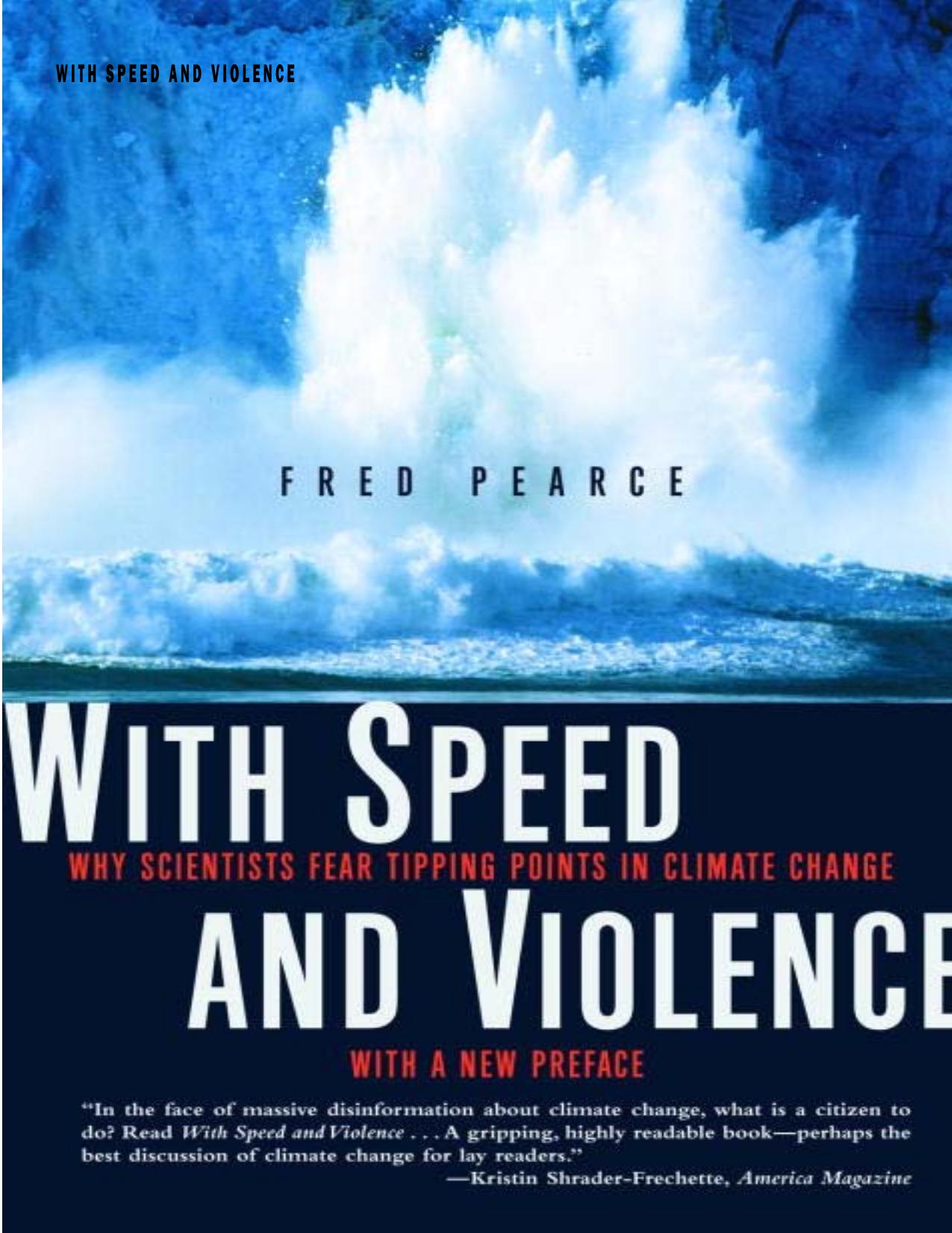With Speed and Violence: Why Scientists Fear Tipping Points in Climate Change by Fred Pearce

Author:Fred Pearce
Language: eng
Format: mobi, epub, pdf
Published: 2008-05-14T04:24:00+00:00
We now know that two main ice sheets formed. One stretched from the British Isles across the North Sea and Scandinavia, and then west through Russia and western Siberia, and north across the Barents Sea as far as Svalbard. A second, even larger sheet covered the whole of Canada and southern Alaska, with a spur extending over Greenland. A smaller sheet sat over Iceland, and the seas around were full of thick floating ice. Strangely, northern Alaska and eastern Siberia, though deep-frozen, were never iced over. But, combined with the older ice covering Antarctica, these ice sheets contained three times as much ice as is present on Earth today-enough to keep sea levels worldwide some 400 feet lower than they are now-and covered 30 percent of Earth's land surface. The ice sheets were high as well as broad, rising up to 2.4 miles above the land surface. They chilled the air above and acted as a barricade for the prevailing westerly winds, which were forced south, skirting the ice sheets. This perpetuated the ice sheets, since the winds would have been the likeliest source of warmth to melt them.
Temperatures fell by around 9°F as a global average, but were 36 degrees lower than they are today in parts of Greenland, and just 5.4 degrees lower in the western Pacific Ocean. The world beyond the ice sheets became dry and cold. Deserts covered the American Midwest, France, and the wide lands of Europe and Asia between Germany and the modern-day Gobi Desert, in Mongolia. Farther south, the Sahara Desert expanded, the Asian monsoon was largely extinguished, and the tropical rainforests of Africa and South America contracted to a few refuges surrounded by grasslands. At the low point, around 70,000 years ago, even the grasslands were largely extinguished, leaving huge expanses of desert, from which winds whipped up huge dust storms. Humans lived by hunting on the plains and hunkering down in the small areas where lush vegetation persisted despite the cold and arid conditions.
It was clear from the start that something drastic must have triggered all this. Astronomical forces were suggested early on-in particular, the idea that the gravitational pull of other planets in the solar system, such as Jupiter, could influence the steady changing of the seasons, and in that way cause glaciers and ice sheets to grow. Many scientists of the day played with this idea. But the first man to subject it to detailed analysis was the son of a Scottish crofter with virtually no formal learning, but a passion for selfeducation and an extraordinary streak of diligence. James Croll was a shy, large-framed man with big ambitions. He stumbled on the idea of an astronomical cause for the ice ages while reading in libraries; transfixed, he spent most of the i86os and r87os pursuing the idea. He took numerous jobs, from insurance salesman to school caretaker to carpenter, in order to finance his passion.
Download
With Speed and Violence: Why Scientists Fear Tipping Points in Climate Change by Fred Pearce.epub
With Speed and Violence: Why Scientists Fear Tipping Points in Climate Change by Fred Pearce.pdf
This site does not store any files on its server. We only index and link to content provided by other sites. Please contact the content providers to delete copyright contents if any and email us, we'll remove relevant links or contents immediately.
How to Do Nothing by Jenny Odell(2681)
A Forest Journey by John Perlin(2620)
The Plant Messiah by Carlos Magdalena(2484)
Babylon's Ark by Lawrence Anthony(2100)
Energy Myths and Realities by Vaclav Smil(2091)
The ESV Study Bible by Crossway Bibles(2057)
Abbey in America by Murray John A(1826)
Fatal Storm by Rob Mundle(1810)
Witness Tree by Lynda V. Mapes(1709)
Shadows on the Gulf by Rowan Jacobsen(1536)
Client Earth by James Thornton(1522)
Brokeback Mountain by Annie Proulx(1493)
Coming Back to Life by Joanna Macy(1485)
Water Rights and the Environment in the United States by John Burch(1430)
Cosmos by Carl Sagan(1422)
Ten Billion by Stephen Emmott(1401)
Mycelium Running: How Mushrooms Can Help Save the World by Paul Stamets(1315)
The overachievers by Robbins Alexandra(1298)
The Uninhabitable Earth by David Wallace-Wells;(1209)
